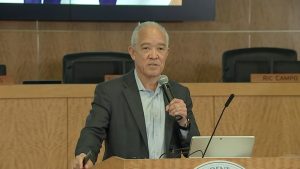
Recent shifts in consumer behavior are playing a significant role in mitigating inflationary pressures across the United States, offering a glimmer of relief for cash-strapped households grappling with soaring prices.
Frustrated by persistently high inflation rates hovering around 19% above pre-pandemic levels, Americans are taking matters into their own hands. From altering shopping habits to embracing thriftier alternatives, consumers are reshaping the retail landscape in their quest to combat price hikes.
A notable trend is the growing preference for store-brand items over name brands, coupled with a surge in patronage at discount stores. Grocery aisles witness a discernible shift as shoppers opt for cost-effective alternatives, steering clear of pricey gourmet foods and snacks. Similarly, the automotive sector sees an uptick in the purchase of used cars, driving dealerships to offer incentives on new vehicle purchases once again.
The ripple effects of consumer resistance extend beyond groceries, influencing price adjustments in various sectors. Major food companies have responded to mounting pressure by moderating their price increases, a departure from the steep hikes witnessed over the past few years. While this may not translate to a complete reversal of grocery prices, the deceleration in inflationary pressures is a welcome development amid broader economic concerns.
The sentiment of public discontent with soaring prices has reverberated into the political arena, emerging as a focal point in President Joe Biden’s reelection bid. Despite the significant decline in inflation rates, consumer dissatisfaction persists, underscoring the enduring impact of inflation on household budgets.
Biden’s administration echoes the sentiments of many economists, condemning what they perceive as unwarranted price hikes driven by corporate profit motives. The phenomenon of “shrinkflation,” where companies reduce product sizes instead of raising prices, has also drawn scrutiny, prompting calls for regulatory action.
However, the tide may be turning as consumers assert their influence in curbing inflation. Unlike past episodes of prolonged inflation, where rising prices fueled further spending in a self-perpetuating cycle, consumers are displaying a newfound reluctance to accept exorbitant price tags. This collective pushback, characterized by informed purchasing decisions and frugal spending habits, holds the promise of a gradual easing of inflationary pressures.
Economists view this trend as a departure from the inflationary psychology of previous decades, where escalating prices fueled a cycle of heightened consumer spending. Instead, consumers like Stuart Dryden of Arlington, Virginia, are opting for value-conscious alternatives, citing substantial price differentials between branded and store-label products.
As businesses recalibrate pricing strategies in response to shifting consumer preferences, the trajectory of inflation appears poised for moderation. Companies are adjusting to consumer demands for affordability, signaling a shift away from the aggressive pricing tactics that characterized the peak of the pandemic-induced inflationary surge.
The evolving dynamics of consumer behavior underscore a newfound assertiveness in shaping economic outcomes, challenging conventional notions of inflation management. With consumers wielding increasing influence in restraining price hikes, the path to sustainable economic recovery may lie in the hands of everyday shoppers navigating the aisles of grocery stores and retail outlets.









